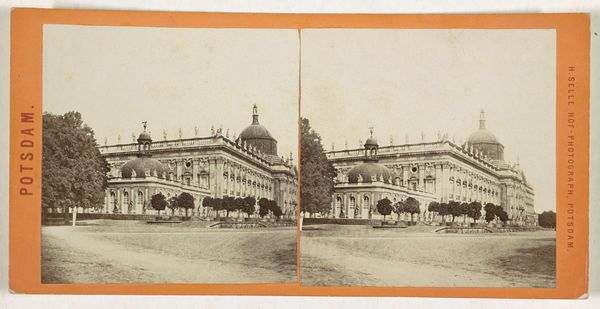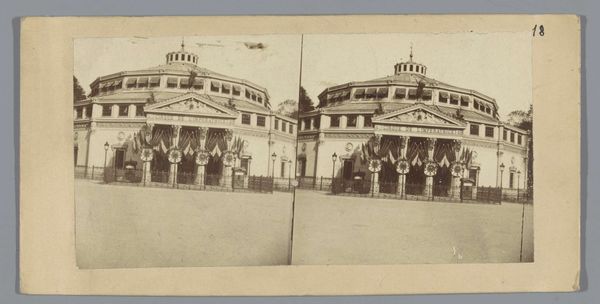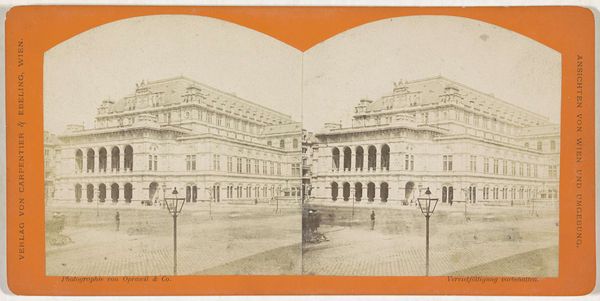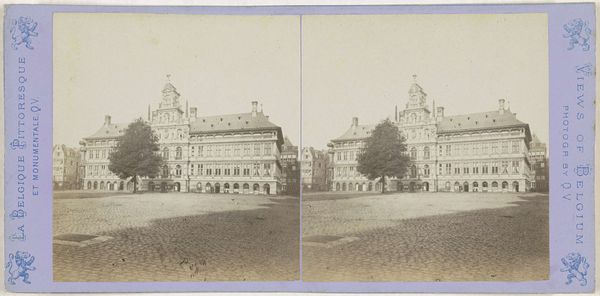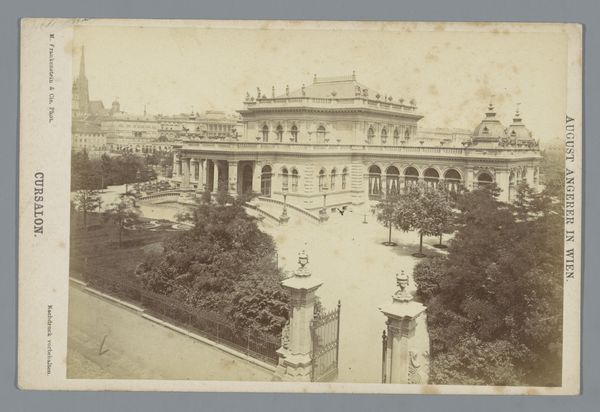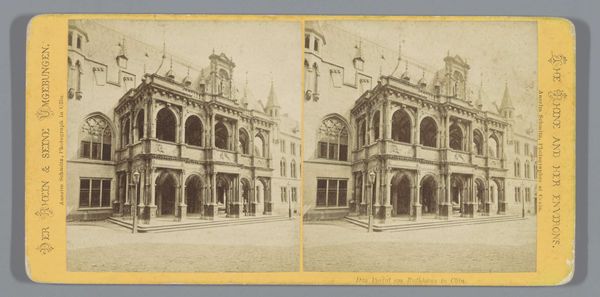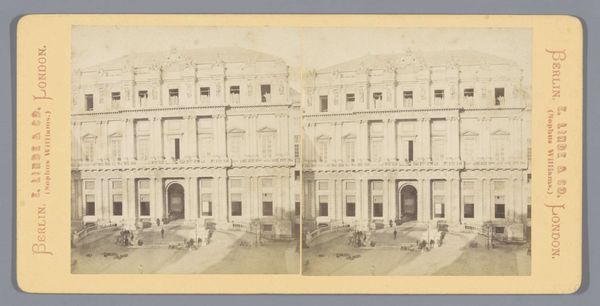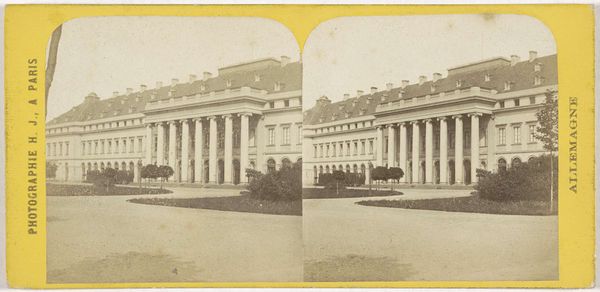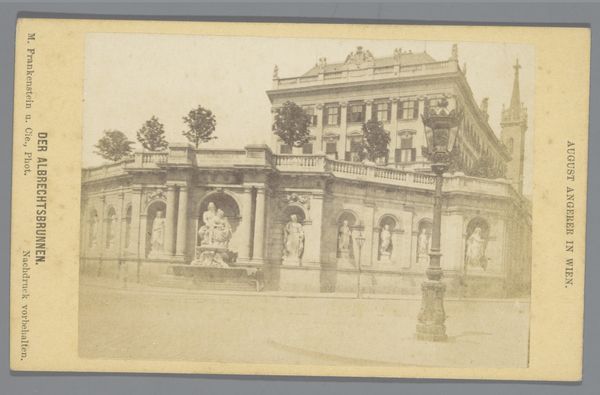
Dimensions: height 85 mm, width 174 mm
Copyright: Rijks Museum: Open Domain
Editor: Here we have Charles Gaudin’s photograph, "Semperoper in Dresden," taken sometime between 1860 and 1870. The architectural details are remarkable; there's almost a feeling of grandness, even in this relatively small-scale image. What's your take on it? Curator: Indeed, the photograph's neoclassical architectural style places it squarely within a lineage of power and cultural capital. I see more than grandness. Consider who had access to such spaces during this era. How might the opera house represent exclusion as much as inclusion, a display of wealth inaccessible to many? Editor: That's a perspective I hadn’t considered. It looks so inviting, but you're right—access would have been severely limited. Curator: Exactly! And think about the photographer. Who was Charles Gaudin, and what was his relationship to this edifice? Was he commissioned? An admirer? These are key questions when interpreting historical photography. Understanding the artist's positionality and the socio-political landscape is essential. What do you notice about the photographic process itself? Editor: Well, it's a stereoscopic image, so it was meant to be viewed with a special device, giving it a 3D effect. Was this a popular form of entertainment? Curator: Yes, stereoscopic images were quite popular and served as a form of mass media. Now consider the relationship between that technology and access to different social classes at the time. Editor: It's almost like early virtual tourism, but probably only accessible to those with some disposable income. I appreciate that looking at it this way opens up so many avenues for interpretation. Curator: Precisely. Art doesn’t exist in a vacuum. Exploring its intersections with power, class, and technological development can reveal so much.
Comments
No comments
Be the first to comment and join the conversation on the ultimate creative platform.
